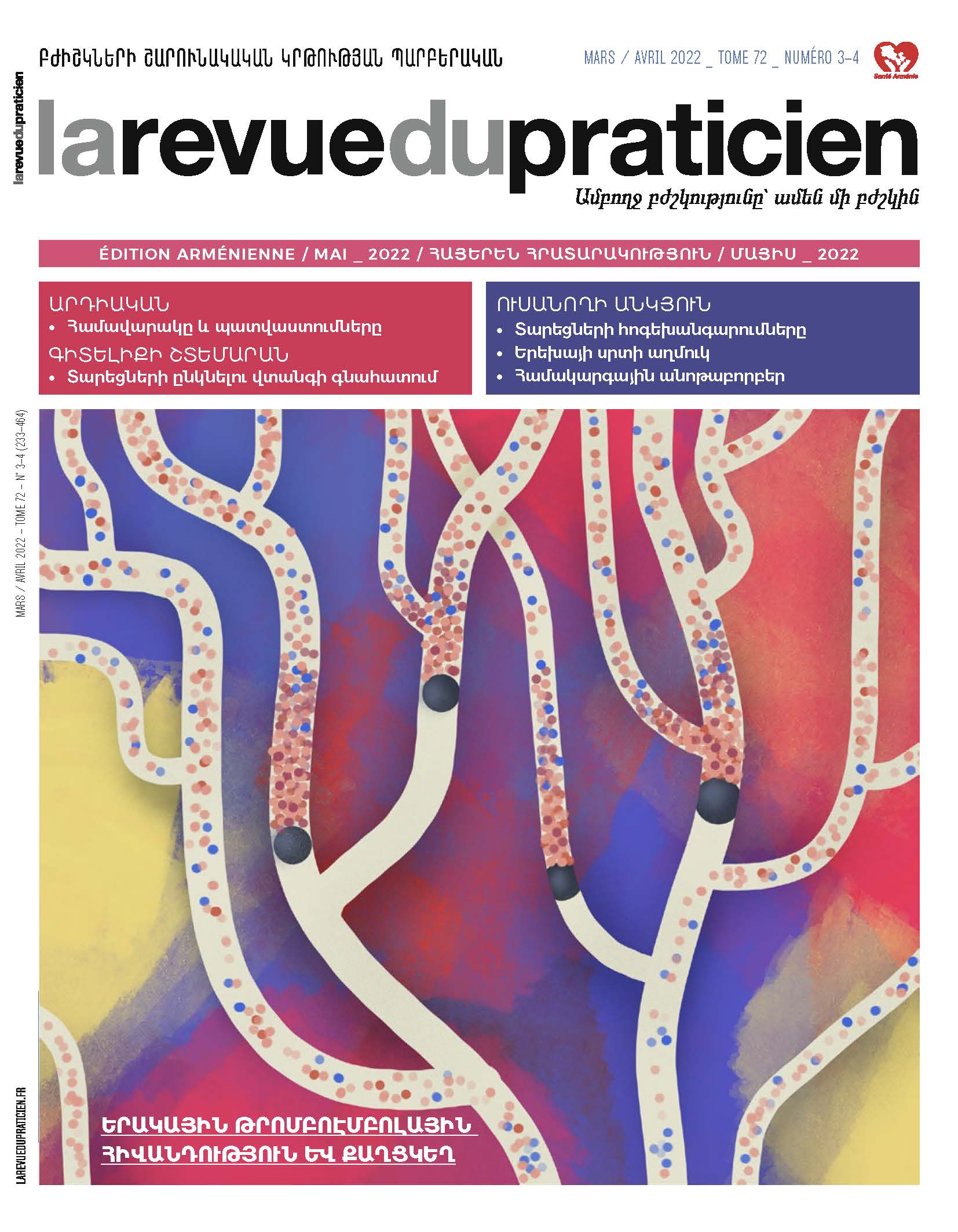Կաթետերային թրոմբոզը և վերին վերջույթների թրոմբոզը ուռուցքաբանության մեջ 26
Olivier Espitia.Ամփոփագիր
Վերին վերջույթների երակային թրոմբոզներն (ՎՎԵԹ) ի հայտ են գալիս կենտրոնական երակային կաթետեր ունեցող քաղցկեղով հիվանդների 2-6%-ի շրջանում, հետևաբար՝ հաճախ հանդիպող բարդություն են։ Սակայն դրանք ավելի հազվադեպ են համակցված թոքային էմբոլիայի (ԹԷ) հետ, քան ստորին վերջույթների թրոմբոզները՝ դեպքերի ընդամենը 2–8%-ը։ ՎՎԵԹ-ի ախտորոշման ժամանակ ԹԷ-ի առկայությունը մեծացնում է թրոմբոզի ախտակրկնության վտանգը։ Թրոմբոզներին նպաստող գործոնները կապված են հիվանդի, քաղցկեղի և կաթետերի հետ։ ՎՎԵԹ-ի պարագայում կաթետերի հեռացում համակարգված կերպով չի իրականացվում, դա ենթադրվում է սխալ տեղակայման, վարակի, գործառույթի խանգարման դեպքում կամ երբ արդեն դրա կարիքը չկա։ Մերձադիր ՎՎԵԹ-ի դեպքում հարկավոր է առաջարկել հակամակարդիչներով ապաքինող բուժում առնվազն երեք ամիս շարունակ։ Վերին վերջույթների երակային թրոմբոզի բուժման համար կարելի է կիրառել նաև ցածր մոլեկուլային զանգվածով հեպարիններ կամ ուղղակի ազդեցության հաբային հակամակարդիչներ։
